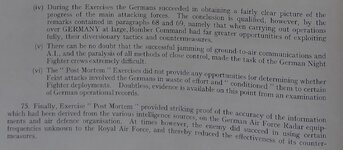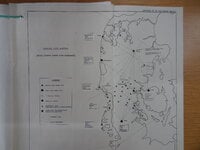If your systems could see that far, you would just report all airfields actively launching. Remember, they (the Allies in this case) will assimilate into flights, then squadrons, then start navigating. From nav they will further assimilate into packages, or Divisions. Once into squadrons, depending on German comms, you could easily start talking about where they were off a given point (bearing and range from what is now called a bullseye) which builds all airborne assets situational awareness.
Things were a little different for Bomber Command night operations. Navigators of individual aircraft were up to their own capabilities to navigate to the target and back. They did not formate on other aircraft. Critical and emphasised at all times, was the need to keep the Bomber Stream compact, and crews followed timing to turning points at specific speeds and height bands. GEE was the primary navigational aid and once outside of GEE range (and once jammed by the Germans) the navigator relied on fixes with towns along the way to supplement and correct his dead reckoning navigation.
Jim


